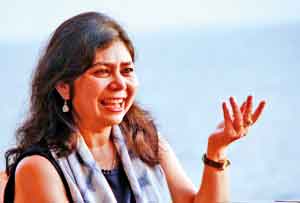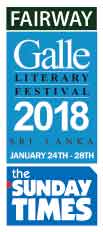In search of a well-hidden Royal secret

Shrabani: Taking abreak after success of book and film.
What she found when she did follow up resulted in the bestselling novel, ‘Victoria and Abdul’ which was released as a motion picture in September last year and has been nominated for two Oscars this year. The story has also increased the number of visits to Osbourne House, Abdul Karim’s grave in India and many other places of interest in the book. It’s hard to imagine that a simple observation could lead to such a phenomenal story but that’s something which Shrabani Basu found even from her early days as a journalist straight out of university armed with her degree in history. “In Bombay there was this construction going on and on and we would say ‘what is going on in this place?’ I was just a trainee reporter and I got down and asked and goodness me! It led to quite a big story which was quite scandalous,” she laughs.
All was not smooth sailing when Shrabani began her search for the story of Abdul. Queen Victoria’s children had tried to erase all evidence of the Queen’s relationship with Abdul, which meant that many of the letters, gifts and other objects exchanged between the two had been destroyed. When she heard about Queen Victoria’s journals in Urdu, she went to take a closer look, hoping to find some new clues – only to find 13 whole volumes! The journals were the product of the lessons in Urdu which Queen Victoria took under Abdul’s instruction, with Queen Victoria writing a few lines every day. As her learning progressed, so did the length of her entries, with her last entry stretching to half a page – something which Shrabani finds amazing.
“The irony is that Queen Victoria’s own journals in English, are actually rewritten and edited by her daughter Beatrice, so they’re not in her own handwriting and the only place where Queen Victoria’s diary is in her own handwriting is in her Urdu journals,” she explains.
Shrabani says she didn’t think the book would be popular because she wasn’t thinking of the book’s reception at all. “You don’t think of all that when you’re writing – you just focus on the work, but it is a fascinating story and I’m glad that people loved it,” she says. One of the reasons she feels the book and movie have been so popular is because of what it reveals of Queen Victoria. “This was a side to her that people just didn’t know, that’s why it’s been so fascinating – how she actually loved India because when we see Queen Victoria, it’s only somebody who represents the imperial side of things, which she did, no doubt. Of course you don’t realize that she’s a constitutional monarch, the administration is not run by her – she’s just a figurehead, she herself personally had such a deep feeling for India, she wanted to know more about Indians and the common people of India,” she says.
 “She had portraits painted of potters and those who worked with carpets and she wanted to know what they were like and she brought them to England as well – she bought many of these artifacts from them which she kept in Osbourne House and then made a little mini India in Osbourne House – there’s the Darbar room, which is Indian architecture and it stands out because this is her love for India speaking,” she says.
“She had portraits painted of potters and those who worked with carpets and she wanted to know what they were like and she brought them to England as well – she bought many of these artifacts from them which she kept in Osbourne House and then made a little mini India in Osbourne House – there’s the Darbar room, which is Indian architecture and it stands out because this is her love for India speaking,” she says.
She also points out that Queen Victoria was rather naïve, asking if the dates of Indian festivals could be changed to reduce the occurrence of riots, but for Shrabani it only shows the love she had for India.
Following the success of the book and subsequent film, Shrabani feels that she is due for a small break before her next big project. Having consulted on the film for historical accuracy and sourced many minute details, including what Indian men of the time wore in their time off work, the rings and other jewellery worn by their wives etc., she feels that the painstaking work she had to do for the film was much more than she had to do for the book with regards to some aspects. “It’s something that I hadn’t done for the book – a film is different, everything is visual,” she explains. Although she might not start working on a new project right now, she has another idea in mind but doesn’t want to reveal more. “I have something in mind. It’ll happen,” she smiles confidently.


